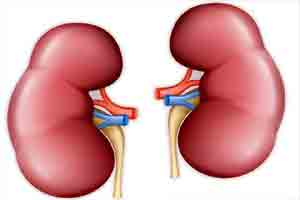- Home
- Editorial
- News
- Practice Guidelines
- Anesthesiology Guidelines
- Cancer Guidelines
- Cardiac Sciences Guidelines
- Critical Care Guidelines
- Dentistry Guidelines
- Dermatology Guidelines
- Diabetes and Endo Guidelines
- Diagnostics Guidelines
- ENT Guidelines
- Featured Practice Guidelines
- Gastroenterology Guidelines
- Geriatrics Guidelines
- Medicine Guidelines
- Nephrology Guidelines
- Neurosciences Guidelines
- Obs and Gynae Guidelines
- Ophthalmology Guidelines
- Orthopaedics Guidelines
- Paediatrics Guidelines
- Psychiatry Guidelines
- Pulmonology Guidelines
- Radiology Guidelines
- Surgery Guidelines
- Urology Guidelines
Heavier and taller children are more likely to develop kidney cancer as adults than their average-sized peers

A study of more than 300,000 individuals in Denmark, presented at this year's European Congress on Obesity in Glasgow, Scotland (28 April-1 May), reveals that heavier and taller children are at greater risk than their average-sized peers of developing renal cell carcinoma (RCC) as adults.
RCC is the most common form of kidney cancer found in adults. Although it often occurs in men between the ages of 50 and 70, cancer can be diagnosed throughout adulthood. Medical experts don't know the exact causes of RCC.
"We know that overweight in adulthood is associated with an increased risk of RCC. We also know that cancers take many years to develop. We, therefore, had a theory that already being overweight in childhood would increase the risk of RCC later in life," explains lead author Dr Britt Wang Jensen.
To tease out the relationships between childhood body size and the risk of RCC in adulthood, Dr. Jensen, of the Center for Clinical Research and Prevention at Bispebjerg and Frederiksberg Hospital and her colleagues used data from the Copenhagen School Health Records Register (CSHRR). The CSHRR is an electronic database of health examination information with data from 372,636 children born in Copenhagen in the years 1930 to 1989 (and aged 30 to 89 years now). It contains serial measurements of height and weight as well as birth weight from 1942 onwards reported by the parents.
In their study, the researchers included 301,422 individuals (152,573 men) from the CSHRR, born from 1930 to1985. The weights and heights were measured at annual school health examinations at the ages 7-13 years, and body mass index (BMI) was used to categorize the children as normal-weight or overweight, based on age- and sex- specific cut-offs suggested by the International Obesity Task Force. Cases of RCC were identified by linkage to the Danish Cancer Registry.
To analyse the data, the researchers used a statistical technique known as Cox proportional hazards regression. The procedure relates several factors or exposures -- considered simultaneously -- to measure the risk of an outcome, in this case, the risk of developing RCC.
During a median of 32 years of observation, 1,010 individuals (680 men) were diagnosed with RCC. Among men and women significant and positive associations were observed between childhood BMI and height, respectively, and RCC risk. When comparing two 13-year old children with one z-score difference in BMI (equivalent to 5.9 kg for boys and 6.8 kg for girls), but with similar height, the heaviest boy or girl had, in each case, a 14% higher risk of RCC than the leaner child. For height, one z-score difference in two 13-year old children (equivalent to 8.0 cm for boys and 6.9 cm for girls) was associated with a 12% increased risk of RCC later in life for the taller boy or girl.
Compared to children with a normal-weight at 7 and 13 years, children with overweight at both ages did not have increased risks of RCC, whereas children with normal-weight at 7 years and overweight at 13 years had a 67% greater risk of developing this cancer. Compared to children with an average height at 7 and 13 years, children who were 0.5 z-score taller than average at age 7 years (equivalent to 2.6 cm for boys and girls) and remain taller than average until age 13 years have a 6% increased risk of RCC. Children who grew from average to above average height (0.5 z-score change is equivalent to 4.0 cm additional growth in height for boys and 3.5 cm for girls) had an 8% increased risk of RCC.
The authors say: "We have found in other studies that childhood height is positively associated with several cancer forms. Therefore, we did expect to find that tall children have a higher risk of RCC than average-sized children."
They conclude: "Our findings that heavier and taller children have increased risks of RCC opens the door to new ways to explore the causes of kidney cancer."

Disclaimer: This site is primarily intended for healthcare professionals. Any content/information on this website does not replace the advice of medical and/or health professionals and should not be construed as medical/diagnostic advice/endorsement or prescription. Use of this site is subject to our terms of use, privacy policy, advertisement policy. © 2020 Minerva Medical Treatment Pvt Ltd